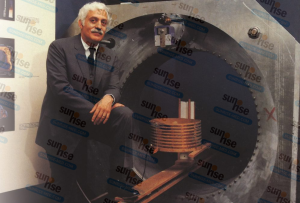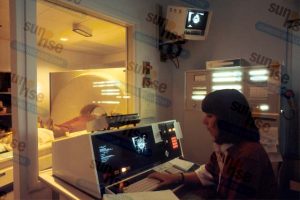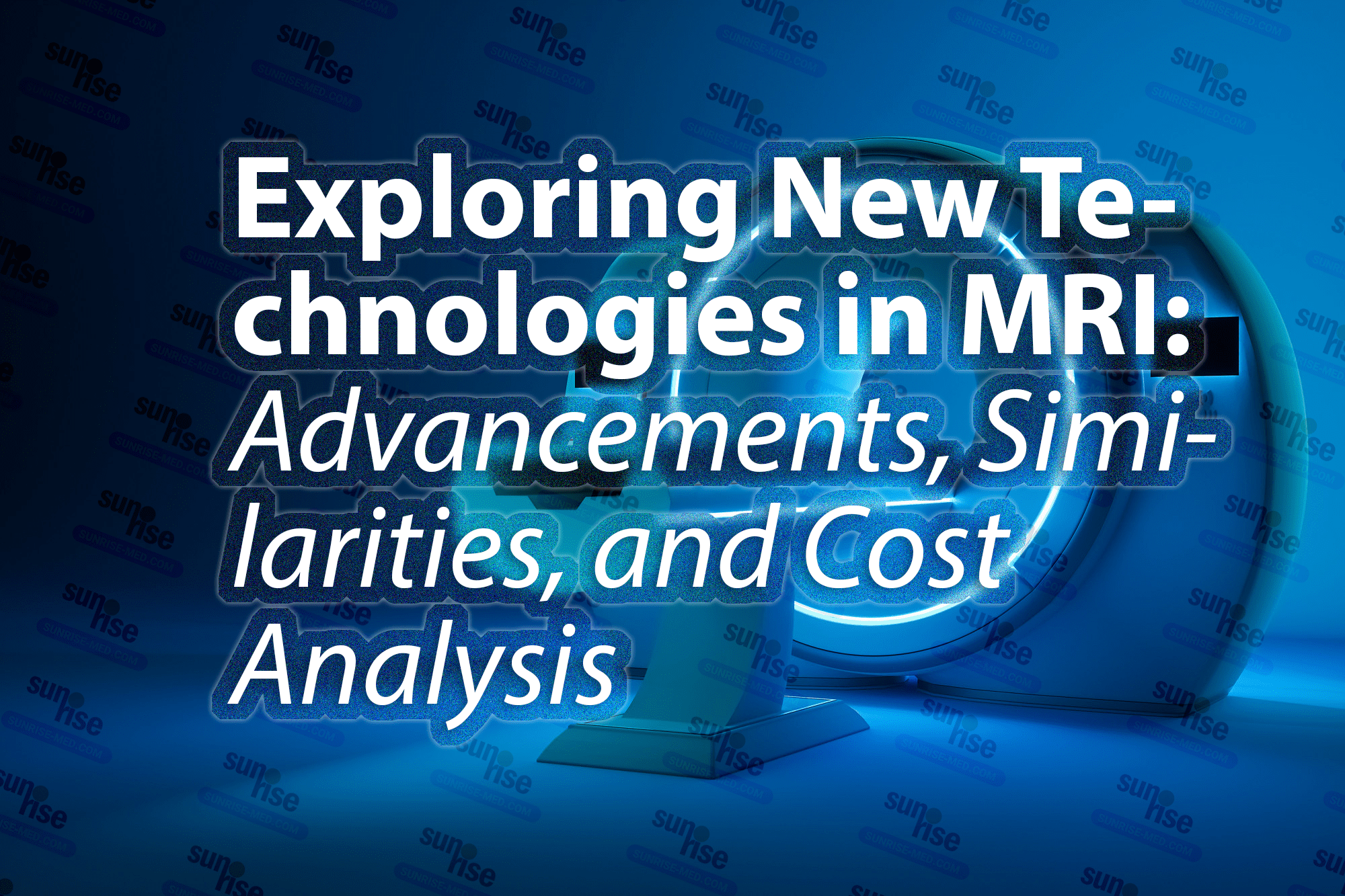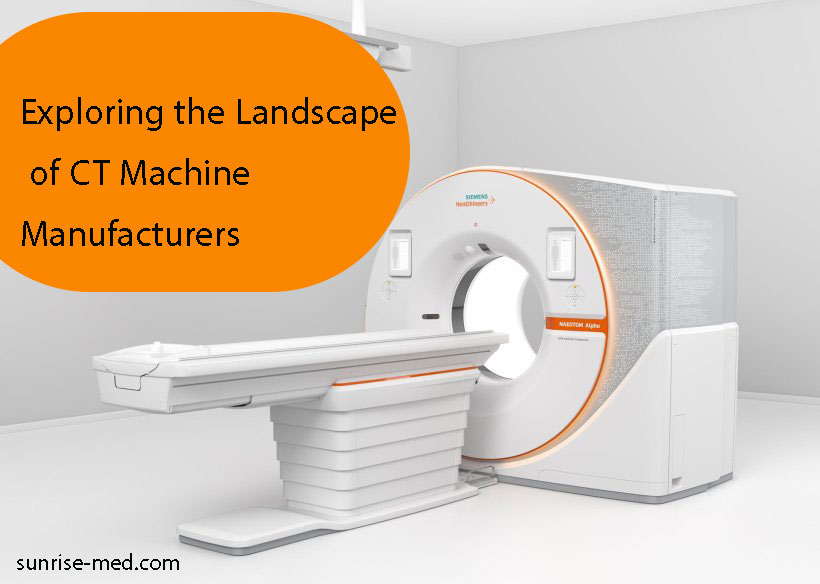Introduction:
Magnetic Resonance Imaging (MRI) technology has undergone significant advancements over the years, leading to the development of new and innovative MRI systems. These advancements aim to enhance image quality, improve diagnostic accuracy, and streamline workflow efficiency in healthcare settings. In this comprehensive analysis, we will explore the latest technologies in MRI, identify their similarities with older systems, and delve into the cost considerations associated with acquiring and implementing these new technologies.
Advancements in MRI Technology:
High-Field MRI:
High-field MRI systems operate at magnetic field strengths higher than the conventional 1.5 Tesla (T), typically at 3T or even 7T. These systems offer several advantages, including increased signal-to-noise ratio (SNR), improved spatial resolution, and enhanced tissue contrast. High-field MRI is particularly beneficial for neuroimaging, musculoskeletal imaging, and functional imaging studies. Additionally, higher field strengths enable the visualization of fine anatomical structures and subtle pathological changes, leading to more accurate diagnoses and treatment planning.
Multi-Parametric MRI:
Multi-parametric MRI (mpMRI) involves the acquisition of multiple imaging parameters, such as T1-weighted, T2-weighted, diffusion-weighted, and dynamic contrast-enhanced images, during a single examination. This comprehensive approach provides complementary information about tissue morphology, composition, and function, allowing clinicians to characterize lesions more accurately and differentiate between benign and malignant tissues. MpMRI is widely used in oncology for prostate, breast, and liver imaging, where precise tumor localization and characterization are crucial for treatment selection and monitoring.
Functional MRI (fMRI):
Functional MRI (fMRI) measures changes in blood flow and oxygenation levels in the brain in response to neural activity, enabling the mapping of brain function and connectivity. This non-invasive technique is invaluable for studying cognitive processes, identifying regions involved in specific tasks or behaviors, and diagnosing neurological disorders such as epilepsy and Alzheimer’s disease. Advanced fMRI techniques, such as resting-state fMRI and task-based fMRI, provide insights into brain networks and functional connectivity patterns, aiding in the diagnosis and management of neurological conditions.
Real-Time MRI:
Real-time MRI technology allows for the acquisition and visualization of dynamic processes in real-time, providing continuous imaging feedback during procedures or interventions. This capability is particularly beneficial for interventional radiology, cardiac imaging, and musculoskeletal imaging, where precise guidance and monitoring are essential. Real-time MRI enables clinicians to perform minimally invasive procedures with greater accuracy and safety, reducing procedure time and patient discomfort.
Artificial Intelligence (AI) in MRI:
Artificial intelligence (AI) and machine learning algorithms are increasingly being integrated into MRI systems to automate image analysis, enhance diagnostic accuracy, and improve workflow efficiency. AI algorithms can assist radiologists in image interpretation, lesion detection, and treatment planning by analyzing vast amounts of imaging data and identifying patterns or abnormalities that may not be apparent to the human eye. Additionally, AI-driven reconstruction techniques can accelerate image reconstruction and reduce scan times, improving patient throughput and resource utilization.

While new MRI technologies offer enhanced capabilities and advanced features, they share several fundamental similarities with older systems:
Magnet Design and Superconducting Technology:
Both old and new MRI systems utilize superconducting magnets cooled by liquid helium to generate the magnetic field necessary for imaging. The principles of superconductivity and magnet design remain consistent across different generations of MRI systems, ensuring stable magnet performance and optimal imaging quality. However, newer systems may incorporate advancements in magnet design, such as higher field strengths or more efficient cooling systems, to improve imaging performance and operational efficiency.
Pulse Sequences and Imaging Techniques:
The basic pulse sequences and imaging techniques used in MRI, such as spin-echo, gradient-echo, and inversion recovery sequences, are consistent across various MRI systems. These fundamental techniques form the basis for acquiring different types of MRI images, including T1-weighted, T2-weighted, and diffusion-weighted images. While newer MRI systems may offer additional imaging sequences or advanced reconstruction algorithms, the underlying principles of MRI physics and image acquisition remain unchanged.
Image Interpretation and Clinical Applications:
Radiologists utilize similar principles for interpreting MRI images and diagnosing various medical conditions, regardless of the MRI system used. The visual interpretation of anatomical structures, tissue characteristics, and pathological findings relies on radiological expertise and clinical knowledge, rather than specific technological features of the MRI system. Therefore, radiologists can apply their skills and experience to analyze images acquired from both old and new MRI systems, ensuring consistent and reliable diagnostic interpretations.

Cost Considerations of New MRI Technologies:
The cost of acquiring and implementing new MRI technologies can vary significantly depending on several factors, including the type of system, field strength, vendor, and additional features or accessories. Here are some cost considerations associated with new MRI technologies:
Equipment Cost:
The upfront cost of purchasing a new MRI system is a significant investment for healthcare facilities. High-field MRI systems, such as 3T or 7T systems, generally command higher prices than lower-field systems due to their advanced capabilities and increased manufacturing costs. Additionally, systems with specialized features or configurations, such as dedicated cardiac imaging or interventional MRI systems, may have higher upfront costs compared to standard diagnostic systems.
Installation and Site Preparation:
The installation of a new MRI system requires careful planning, site preparation, and logistical coordination to ensure optimal performance and safety. Healthcare facilities may incur additional expenses for site renovations, shielding requirements, and infrastructure upgrades to accommodate the new MRI system. Installation costs can vary depending on the complexity of the project, facility-specific requirements, and regulatory compliance standards.
Service and Maintenance Contracts:
Service and maintenance contracts are essential for ensuring the continued operation and performance of MRI systems over their lifecycle. Healthcare facilities typically enter into service agreements with equipment vendors or third-party service providers to receive ongoing maintenance, technical support, and access to software updates. The cost of service contracts varies depending on the level of coverage, response time, and service provider reputation. Additionally, facilities may incur additional expenses for spare parts, consumables, and system upgrades during the service contract period.
Training and Education:
Training and education are critical components of implementing new MRI technologies effectively. Healthcare providers and radiology staff require comprehensive training on system operation, image acquisition techniques, and clinical applications to maximize the benefits of the new MRI system. Vendor-provided training programs, continuing education courses, and hands-on workshops are essential for ensuring proficiency and competence among MRI users. Training costs may include registration fees, travel expenses, and instructor fees, depending on the training format and duration.
Total Cost of Ownership (TCO):
In addition to upfront equipment costs, healthcare facilities must consider the total cost of ownership (TCO) when evaluating new MRI technologies. TCO encompasses all expenses associated with acquiring, operating, and maintaining the MRI system over its expected lifespan. This includes equipment depreciation, energy consumption, consumables, service contracts, training, and potential upgrades or replacements. By calculating the TCO, healthcare administrators can make informed decisions about budget allocation, resource planning, and long-term financial sustainability.

Introduction to Siemens MAGNETOM Trio, A Tim 3.0T MRI System:
Siemens MAGNETOM Trio, A Tim 3.0T MRI system represents a pinnacle of advanced imaging technology, offering exceptional performance, versatility, and clinical capabilities. Developed by Siemens Healthineers, a global leader in medical imaging solutions, the MAGNETOM Trio combines a powerful 3 Tesla magnetic field strength with innovative Tim (Total imaging matrix) technology to deliver high-resolution images across a wide range of clinical applications. Let’s delve into the key features and capabilities of the Siemens MAGNETOM Trio, A Tim 3.0T MRI system.
Magnet Design and Field Strength:
The MAGNETOM Trio features a superconducting magnet with a magnetic field strength of 3 Tesla (3T), which is significantly higher than conventional MRI systems. The higher field strength offers several advantages, including increased signal-to-noise ratio (SNR), improved spatial resolution, and enhanced tissue contrast. These benefits enable clinicians to visualize fine anatomical details and subtle pathological changes with exceptional clarity, leading to more accurate diagnoses and treatment planning.
Tim (Total imaging matrix) Technology:
At the core of the MAGNETOM Trio is Siemens’ proprietary Tim technology, which revolutionizes MRI imaging by optimizing coil design, signal reception, and image reconstruction. Tim technology utilizes a flexible coil configuration, consisting of multiple small coil elements distributed over the patient’s body, to improve signal sensitivity and spatial coverage. This innovative approach allows for parallel imaging techniques, such as simultaneous multi-slice acquisition and acceleration factors, to accelerate image acquisition and reduce scan times without compromising image quality.
Advanced Imaging Capabilities:
The Siemens MAGNETOM Trio offers a comprehensive suite of advanced imaging capabilities, tailored to meet the diverse needs of clinical practice and research. With a wide range of imaging sequences and protocols, including T1-weighted, T2-weighted, diffusion-weighted, and dynamic contrast-enhanced sequences, the MAGNETOM Trio enables precise anatomical imaging, functional assessment, and tissue characterization across various body regions. Additionally, specialized imaging techniques, such as diffusion tensor imaging (DTI), spectroscopy, and perfusion imaging, provide valuable insights into tissue microstructure, metabolism, and blood flow dynamics, enhancing diagnostic confidence and therapeutic decision-making.
Patient Comfort and Experience:
Siemens has prioritized patient comfort and experience in the design of the MAGNETOM Trio, incorporating features aimed at reducing anxiety, improving compliance, and enhancing overall satisfaction. The system’s wide-bore design and patient-friendly accessories create a more open and comfortable environment for patients during imaging procedures, particularly for claustrophobic or larger individuals. Additionally, Siemens has integrated advanced motion correction techniques and real-time monitoring capabilities to minimize motion artifacts and optimize image quality, ensuring diagnostic accuracy and reproducibility.
Clinical Applications:
The Siemens MAGNETOM Trio is well-suited for a wide range of clinical applications, including neuroimaging, musculoskeletal imaging, cardiovascular imaging, oncology, and more. Its versatility and robust imaging capabilities make it a valuable tool for diagnosing various medical conditions, guiding treatment decisions, and monitoring disease progression. Whether it’s detecting brain tumors, evaluating joint injuries, or assessing cardiac function, the MAGNETOM Trio empowers clinicians with the tools they need to deliver exceptional patient care and achieve better outcomes.
In summary, the Siemens MAGNETOM Trio, A Tim 3.0T MRI system represents a cutting-edge solution for high-performance imaging in clinical and research settings. With its powerful magnetic field strength, innovative Tim technology, advanced imaging capabilities, and patient-centric design, the MAGNETOM Trio enables clinicians to push the boundaries of diagnostic imaging and deliver personalized care to patients with confidence and precision.
Conclusion:
New technologies in MRI represent significant advancements in imaging capabilities, diagnostic accuracy, and patient care. From high-field MRI systems and multi-parametric imaging techniques to real-time MRI and artificial intelligence algorithms, these innovations offer unprecedented opportunities for improving clinical outcomes and advancing medical research. Despite their differences in features and functionalities, new MRI technologies share fundamental similarities with older systems, such as superconducting magnet technology, pulse sequences, and clinical applications.
However, the adoption of new MRI technologies entails substantial cost considerations for healthcare facilities, including equipment procurement, installation, service contracts, training, and ongoing maintenance. It is essential for healthcare administrators to carefully evaluate the upfront and long-term costs associated with acquiring and implementing new MRI systems, weighing the potential benefits against the financial investment. By conducting thorough cost analyses and leveraging available resources effectively, healthcare organizations can make informed decisions about adopting new MRI technologies and optimizing patient care delivery.



